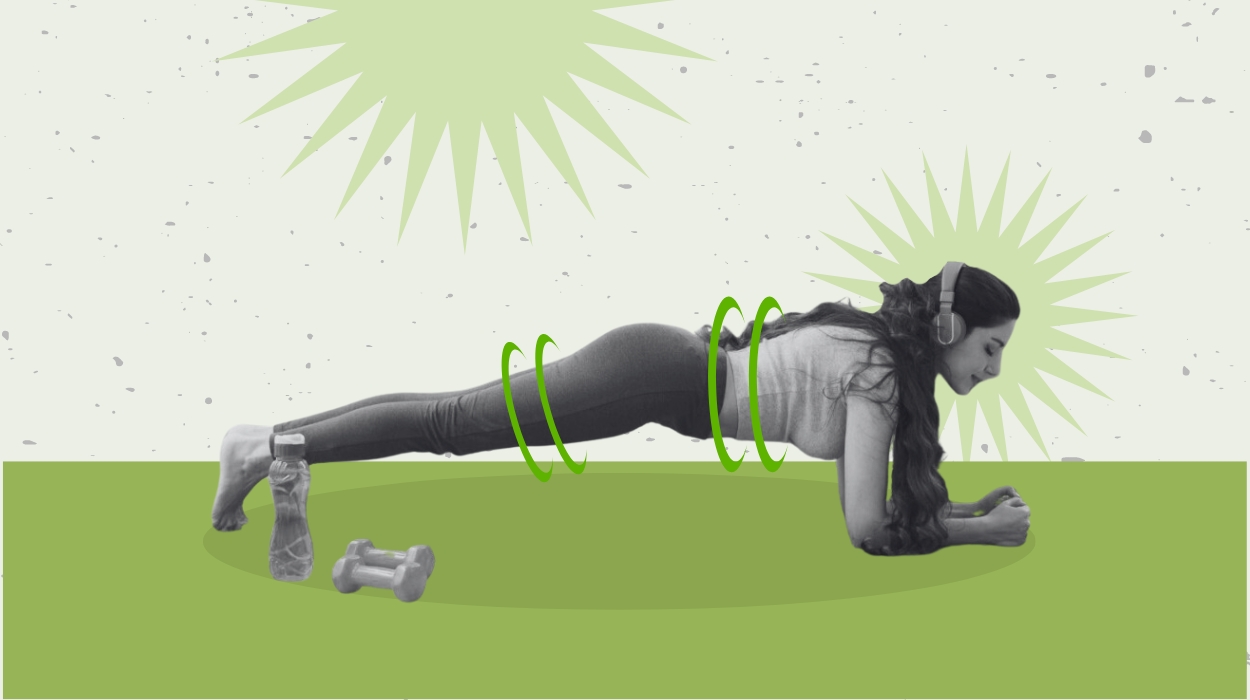
Defined abs are typically a significant appeal. Individuals strive for abs for the aesthetic, while others may appreciate their role in physical performance.
Visually prominent ab muscles are often depicted as a sign of exceptional fitness and dedication. However, understanding that abs are one piece of your core is vital to developing even greater aesthetic and physical ability.
Developing a robust, well-balanced core will positively contribute to body composition and image and promote enhanced physical function.
An effective ab workout will incorporate various movements to engage key muscles.
The core[1] includes muscles at the front, around your torso, your back, and glute muscles.
Although it’s easy to isolate core muscles, engaging multiple muscles of the core is more conducive to enhanced function. The excellent news is that ab workouts at home can target individual muscles and muscle groups.
Home Ab Exercises: Seven Easy Ab Workouts At Home
- Dead Bug: improves stabilization and coordination.
- Bird Dog: improves balance while strengthening core and back muscles.
- Hollow Hold: strengthens deep core muscles.
- Side Bridge: increases oblique and shoulder strength.
- Plank Hold: strengthens abdominal and shoulder muscles.
- Mcgill Curl-up: teaches proper core activation.
- Supine (Glute) Bridge: strengthens the glutes, hips, back, and abdominal muscles.
Seven Ab Workouts At Home In 2024
Muscular endurance[2] of the core is thought to be another critical component of overall function, therefore this should be another key aspect present in an ab workout.
Read on to discover which exercises serve as a valuable part of any at-home abs workout program, including compound ab exercises, stability, and deep core exercises. In addition, these exercises don’t require any equipment whatsoever.
Dead Bug
The dead bug[3] is a great stabilization exercise that can help improve muscular and upper body coordination. This exercise can be seamlessly modified to suit a beginner or advanced individual.
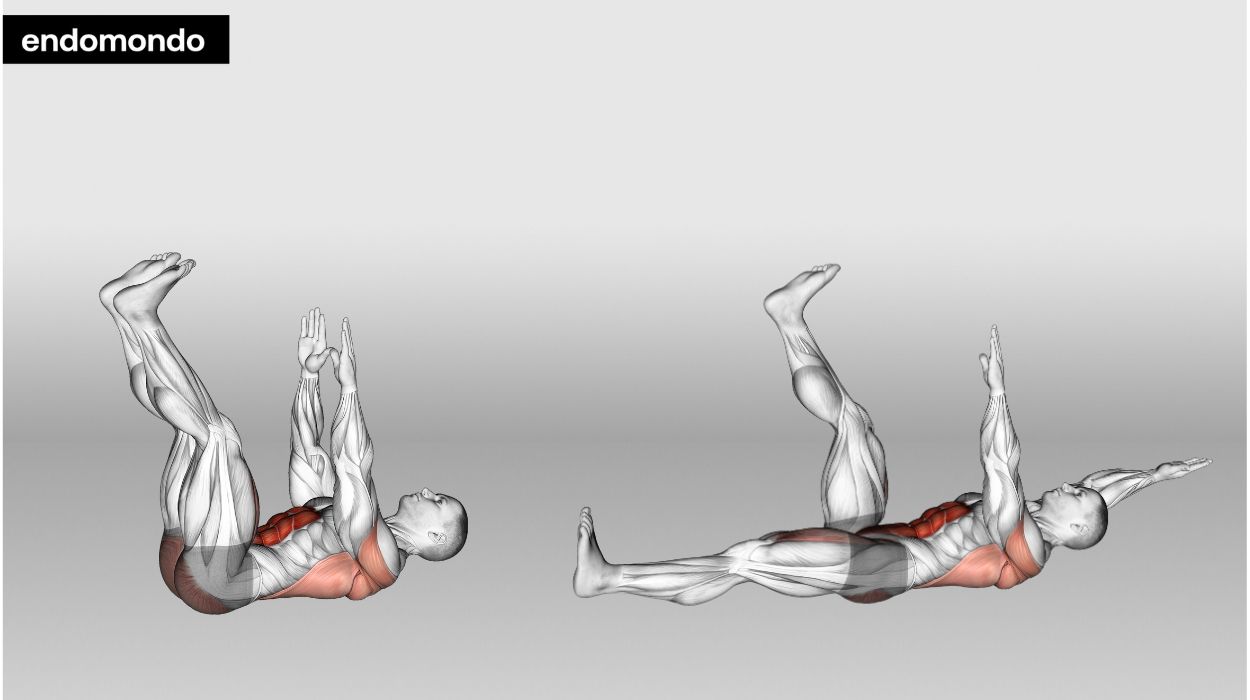
How to do:
- Lie on your back on the ground or a yoga mat
- Bring your arms up to be directly in line with your shoulders at a 90-degree angle.
- Make a bend in your knees and bring them up to be directly over your hips. Align your ankles to be level with your knees.
- To initiate the movement, slowly lower your left arm towards the ground, while simultaneously lowering your right leg to the ground.
- Return to the starting position and perform the same steps on the other side.
Tips:
- Be sure to keep your lower back pressed firmly into the ground throughout the entire movement.
- This exercise aims to perform each repetition with control. If you struggle to perform the movement at first, start with only your legs to establish initial strength and control first.
Optimal Sets & Reps: 2-3 sets of 5-10 repetitions
Bird Dog
The bird dog is another excellent dynamic stabilization exercise that starts in the tabletop position. This exercise will challenge your balance while primarily engaging the external obliques, gluteus maximus, medius, hamstrings, and multifidus. The bird dog also targets the back extensor muscles, which are vital for posture and support of the spine.
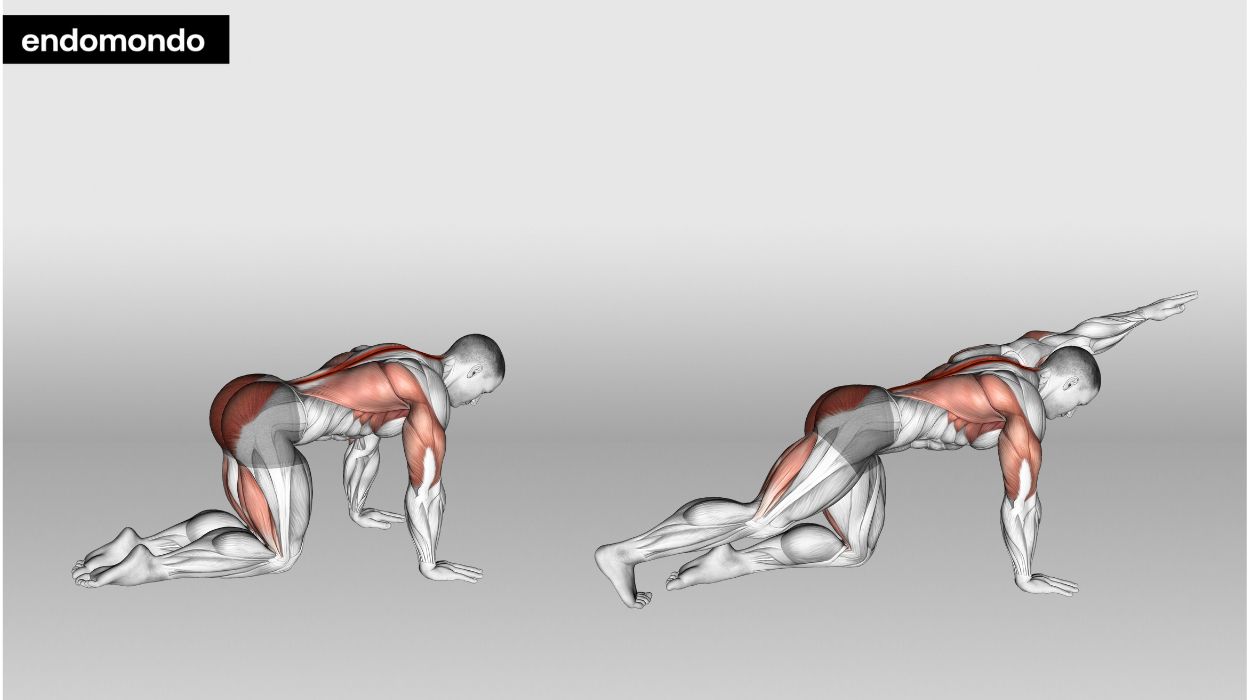
How to do:
- Position yourself with your hands and knees flat on the ground.
- Make sure your hands are in line with your shoulders, and your knees are under your hips.
- To initiate the movement, raise your right arm in front while simultaneously extending your left leg.
- Remain as stable as possible throughout the entire movement.
- Pause for a few seconds and then return to the starting position.
- Switch sides and repeat.
Tips:
- Don’t rush through this movement. To maximize outcomes, it’s better to take your time and work through each repetition with focus.
- Maintain a neutral spine when working through this movement.
Optimal Sets & Reps: 2-3 sets of 5-10 repetitions.
Hollow Hold
The hollow[2] hold is a challenging exercise that requires you to brace your abs. Hollow exercises like this can help engage and strengthen deeper core stabilizing muscles while using other muscle groups. This exercise can easily be adapted to suit your current level and ability.
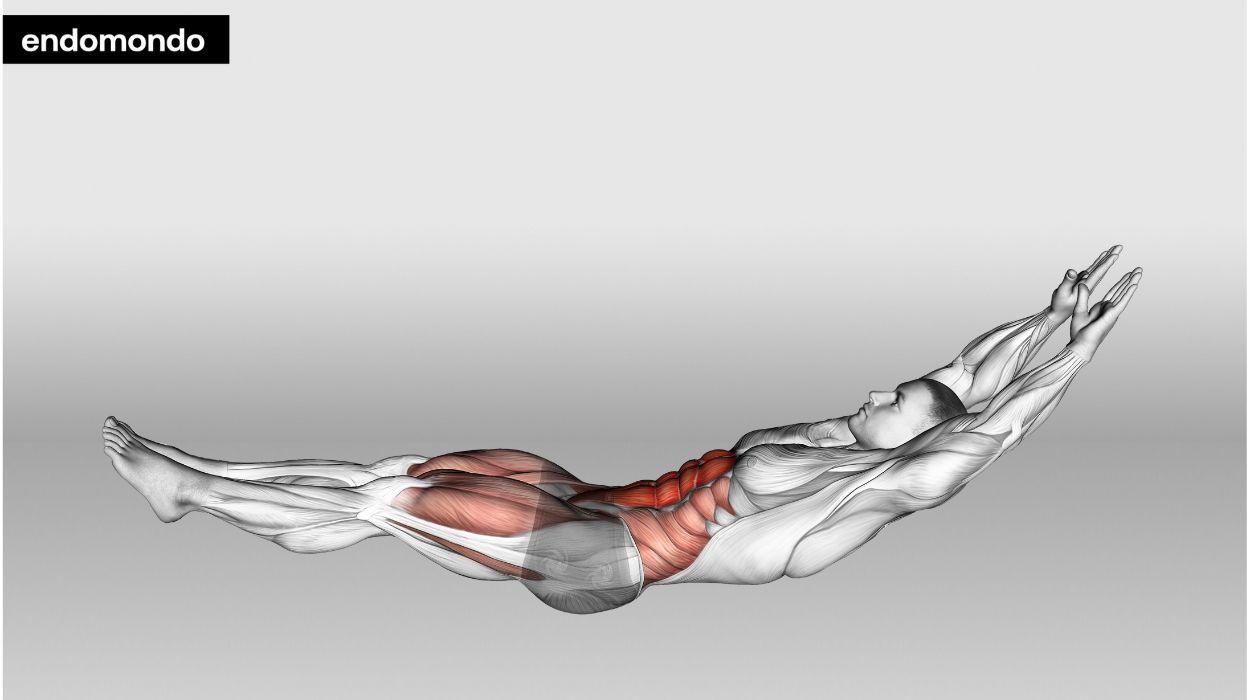
How to do:
- Lie on your back on the floor.
- With your legs straight, raise them to be slightly off of the ground.
- Extend your arms and raise them overhead.
- Engage your core and hold this position for as long as you choose.
- If this is too difficult, bend your knees and tuck them closer to your chest.
Tips:
- Make sure to actively press your lower back firmly into the ground, and maintain contact for the entire time.
- It’s also important to make sure your neck remains in a neutral position, to avoid straining your neck muscles.
Optimal Sets & Reps: 2-3 sets of 10-30 seconds.
Side Bridge
The side bridge is a common exercise used in core stability tests. This exercise effectively targets the oblique muscles, which run down each side of your torso. It also relies on and utilizes shoulder strength.
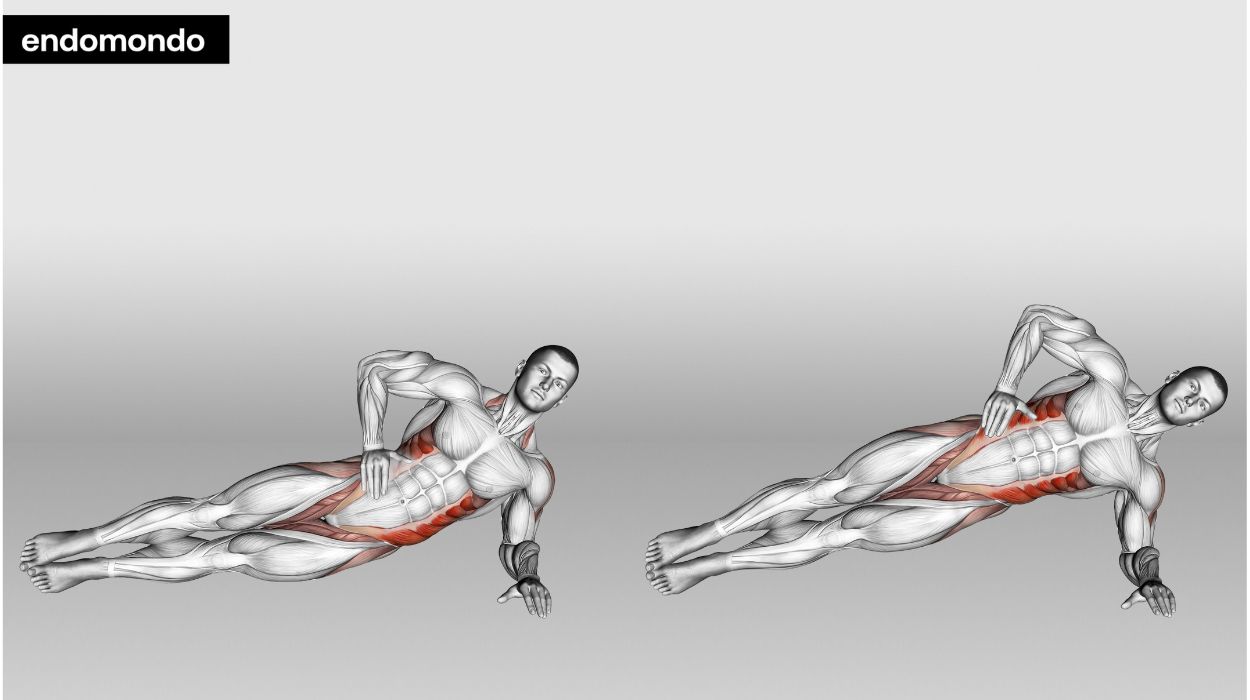
How to do:
- Start on your side on the ground.
- If starting on your right, make sure to position your right elbow directly under your right shoulder.
- From here, your legs should be extended and stacked.
- Initiate the movement by raising your hips off the ground, aiming to maintain a straight line.
- Hold for the prescribed amount of time, then swap over to complete the opposite side.
Tips:
- This movement can be demanding on the shoulders and some individuals may find it too challenging to start.
- To downgrade the movement, keep your knees bent and perform it from your knees instead.
Optimal Sets & Reps: 2-3 sets of 20-30 seconds on each side.
Plank Hold
The plank is a popular exercise that’s easily modified to suit individual fitness levels, targeting various core and shoulder muscles. The perk of this exercise is that it can be performed off your knees, feet, elbows, or hands. From there, it can be further upgraded or downgraded depending on whether you assume an incline or decline position.

How to do:
- Start in a forearm plank position by positioning your elbows underneath your shoulder blades.
- Set your feet shoulder-width apart with your legs extended.
- Initiate the movement by lifting your entire body off the ground.
- Hold for the prescribed amount of time and maintain a straight line from your shoulders to your feet.
Tips:
- Keep your hips neutral – don’t hike them up too high and don’t let them drop too low.
- Your body should be a straight line from head to toe. If you struggle to maintain this position, consider a knee plank to start.
Optimal Sets & Reps: 2-3 sets of 20-40 seconds.
McGill Curl-up
The McGill curl-up is a key exercise often referred to as one of the ‘big three’ regarding core activation. This exercise seems simple but teaches individuals how to effectively activate their abdominal muscles.
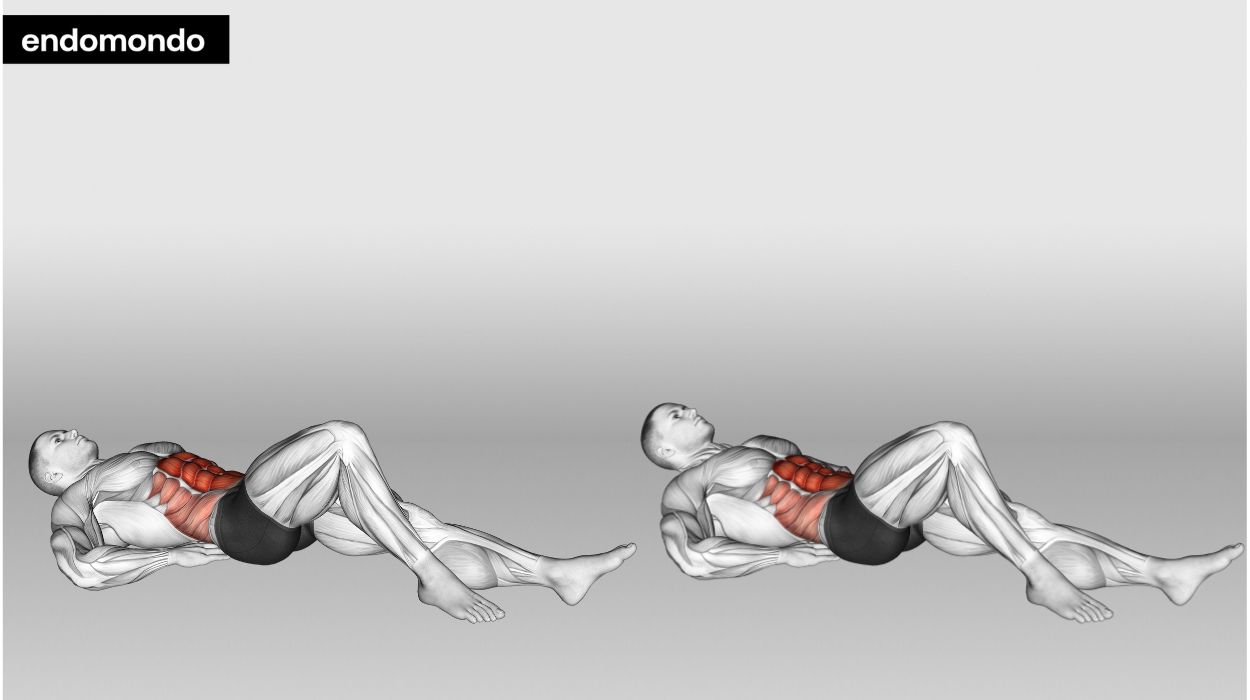
How to do:
- Lie flat on your back.
- Bend one knee and extend your other leg to be resting on the ground.
- Place your hands underneath your lower back to ensure your spine remains in a neutral position.
- Raise your head a few inches off of the ground and hold it for 10 seconds.
- Make sure to avoid raising your head or shoulders too far off of the ground.
- 6. Once 10 seconds is up, return to the resting position.
Tips:
- This exercise aims to ensure there is no lower back movement when you lift your head. Keep this in mind while performing each repetition.
- Perform this movement in a slow and controlled manner, and remain focused on the quality of this movement.
Optimal Sets & Reps: 2-3 sets of 8-10 seconds.
Supine (Glute) Bridge
The glute bridge[4] exercise is excellent for targeting the abdominal, lower back, glutes, and surrounding hip muscles. The difficulty can be further increased to a single-leg glute bridge.
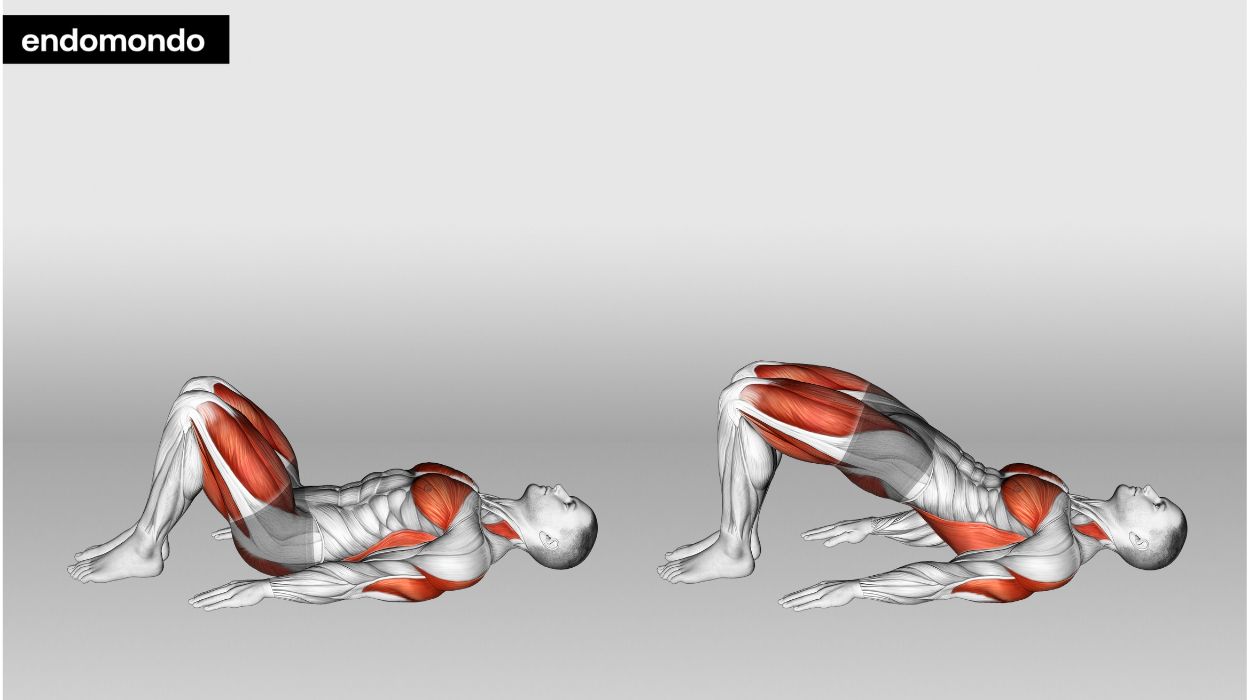
How to do:
- Lie on your back on the ground.
- Bend your knees and position your feet hip-width apart with toes pointed forward.
- Your feet should be slightly in front of your knees.
- Drive through your heels into the ground and raise your hips.
- Squeeze your glutes at the top while pausing briefly before lowering yourself to the ground.
Tips:
- Focus on keeping your rib cage pulled down to be stacked in line with your hips while keeping your core engaged throughout the entire movement.
- Exhale as you lift your hips and squeeze your glutes at the top.
- Avoid pushing through your lower back; focus on using your glutes.
Optimal Sets & Reps: 2-3 sets of 10-12 reps.
Benefits Of Doing Ab Exercises At Home
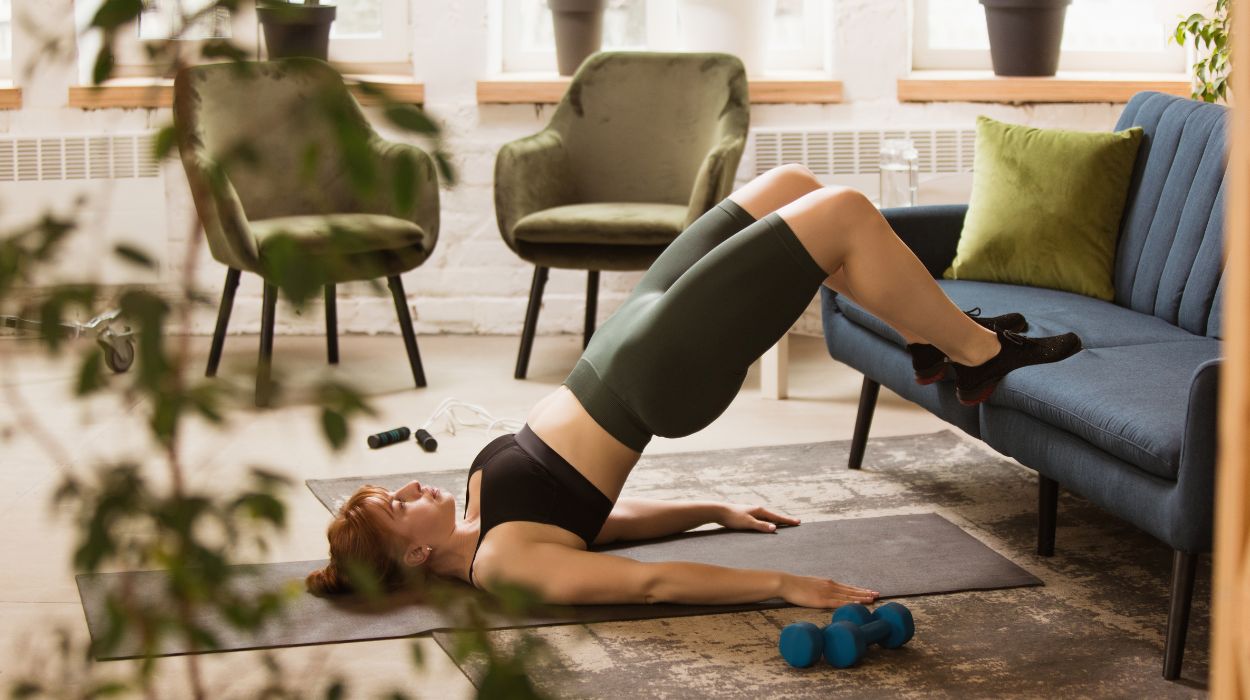
Benefits of working out at home include accessibility, flexibility regarding time, and not needing to travel. Further, the fact that you do not need any equipment to achieve an effective workout makes it a cost-effective option.
Conclusion
There’s an extensive selection of core exercises that you can implement in the gym, such as cable ab exercises or even combining your chest and ab workout. Hopefully, it’s evident that you can engage your core through bodyweight exercises included in your workout at home.
Developing your core strength, endurance, control, and coordination can positively contribute to the visual aspect of your six-pack. But it can also promote enhanced physical function and performance and reduce the risk of injury. Crossfit ab workouts or ab workouts with a ball might seem more effective, but bodyweight exercises at home also work well.
This is an area to incorporate into your training program due to its many benefits. Incorporating a few ab stretches at the end of your session can also support and promote overall function. You can complete an ab workout twice weekly or include one to two exercises at the start or end of your workouts.
Incorporate these exercises into your training routine that allows for consistency. Consistency is critical to most if not all, avenues of improvement. Therefore, designing a workout schedule that best fits your lifestyle will help prevent potential barriers to exercise from arising.
Frequently Asked Questions
An ab workout that effectively targets all elements of your core rather than just one isolated area, will be more effective. To develop a strong core, different movement patterns need to be considered and consistently performed in a balanced manner.
Ab workouts alone will not reduce belly fat, but they can contribute to your total physical activity and overall calorie expenditure. To lose belly fat, a calorie deficit needs to be achieved and maintained.
It’s possible to do abs at home every day, but just like any other muscle group, rest and recovery are essential. Your abdominal muscles are only one part of your core, therefore you could work different areas on different days.
Doing 100 sit-ups per day unfortunately won’t give you abs. It could certainly increase muscular strength and endurance to an extent. However, to develop visible abs, you need a consistent approach to your food intake and training program.
Resources
- Venu Akuthota, Ferreiro, A., Moore, T. and Fredericson, M. (2008). Core Stability Exercise Principles. Current Sports Medicine Reports, [online] 7(1), pp.39–44. doi:https://doi.org/10.1097/01.csmr.0000308663.13278.69.
- Huxel, K.C. and Anderson, B.E. (2013). Core Stability Training for Injury Prevention. Europe PMC (PubMed Central), [online] 5(6), pp.514–522. doi:https://doi.org/10.1177/1941738113481200.
- Seo, K. and Park, K. (2018). The effect of trunk stabilization circuit exercise using a rubber mat on the thickness and white area index of transverse abdominis in healthy young adults. Journal of Physical Therapy Science, [online] 30(6), pp.892–895. doi:https://doi.org/10.1589/jpts.30.892.
- Luk, J.T.C., Kwok, F.K.C., Ho, I.M.K. and Wong, D.P. (2021). Acute Responses of Core Muscle Activity during Bridge Exercises on the Floor vs. the Suspension System. International Journal of Environmental Research and Public Health, [online] 18(11), pp.5908–5908. doi:https://doi.org/10.3390/ijerph18115908.




